Deer reduction zone season begins Sept. 15
|
Deer reduction zones give hunters opportunities to harvest deer in defined urban areas and along portions of Indiana highways, in addition to harvests allowed by statewide bag limits elsewhere in Indiana. One new zone was added this year in Griffy Lake Nature Preserve – view an interactive map.
There is a statewide bag limit of 10 for deer harvested in reduction zones during the reduction zone season. A doe must be harvested first in a zone and be checked toward the bag limit for the deer reduction zone season before harvesting a buck to count toward the deer reduction zone bag limit.
The deer license bundle cannot be used to harvest a deer toward the deer reduction bag limit. Archery equipment and crossbows can be used in deer reduction zones starting Sept. 15.
|
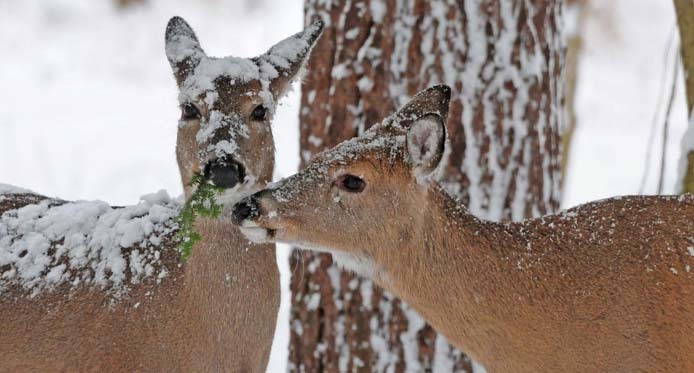 New Indiana Hunting & Trapping Guide available
The new 2020-21 Indiana Hunting & Trapping Guide is now available online. Printed copies are available at local hunting license retailers and DNR properties.
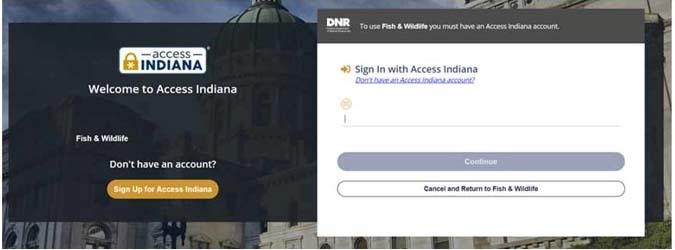 Reminder: Changes to online license portal login
|
Signing in to buy hunting, fishing, and trapping licenses looks a little different now. A new state online portal called Access Indiana, which allows citizens to interact with multiple facets of state government through a single login, has launched.
Presently, there are 18 services that users can enter through Access Indiana. Individuals with an existing online license account should have received an email with information regarding Access Indiana. New DNR customers will be directed to create an Access Indiana account before supplying additional DNR-specific account information. New customers will then be able to complete their DNR profile and purchase a license. If you haven’t already purchased your hunting license for this fall, we recommend creating your Access Indiana account today.
Find instructions for getting started online. For additional assistance with usernames or passwords, call 800-457-8283 for Access Indiana customer support. More information about the Access Indiana portal, answers to FAQs, and other helpful information is available online. DNR is unable to assist with usernames and passwords.
You don’t need to log in to an account to check in game, apply for a reserved hunt, or get your HIP registration number for this fall – you only need your date of birth and Customer ID number. You can find the appropriate links here.
|
 |
 Changes to FWA hunting and trapping draws
Indiana fish & wildlife areas (FWAs) hosting hunting and trapping draws will follow Centers for Disease Control (CDC) recommended practices for social distancing to protect staff and visitors. Unless exempt, visitors should expect to follow CDC guidelines and will be required to wear a mask or face covering while inside a property office or while near other people.
For most draws, property visitors will have limited access to the inside of FWA offices. Public seating areas will be removed to limit crowds congregating in certain areas. If property offices are closed to public access due to further outbreaks of coronavirus, property hunting draws will still take place at FWAs according to each property’s specific draw plan.
Property-specific information on how draws will be conducted can be found here. You can also contact the property directly to find out more details.
Check out the 2019 Indiana White-tailed Deer Report
The 2019 Indiana White-tailed Deer Report is now available online. Read about the 2019-20 season, deer health, opportunities to participate in resource management, and ongoing research.
 National Hunting & Fishing Day and Free Fishing Day, Sept. 26
National Hunting & Fishing Day celebrates the sportsmen and women whose recreational activities have impacted fish and wildlife conservation. We greatly appreciate our hunters, trappers, anglers, boaters, and recreational shooters who have provided funding necessary to improve fish and wildlife habitat, acquire and enhance public lands, increase recreational opportunities, build and maintain public facilities for all Hoosiers, and much more.
To align with National Hunting & Fishing Day, the last Free Fishing Day of the year is on Sept. 26. Anglers are encouraged to take advantage of this opportunity to bring someone new along to enjoy the pastime they love. This also marks the start of Youth Deer Season, Sept. 26-27, a chance for hunters to pass on their passion to the next generation. Recreational shooters are encouraged to enjoy the 12 public shooting ranges and 10 archery ranges that DNR has to offer: on.IN.gov/dnrshootingranges.
Hunting seasons beginning in September
|
Snipe: Sept. 1 – Dec. 16
Sora: Sept. 1 – Nov. 9
Dove: Sept. 1 – Oct. 18
Canada geese (all zones): Sept. 12 – 20
Early teal: Sept. 12 – 27
Deer reduction zone: Sept. 15 – Jan. 31, 2021
Youth deer: Sept. 26 – 27
|
Reserve a spot for put-and-take pheasant
|
You can purchase a reserved spot for put-and-take pheasant hunting on designated DNR properties starting at 6 a.m. on Saturday, Sept. 5. The cost is $30 per reservation. Participating fish & wildlife areas this year include: Atterbury, Glendale, J.E. Roush Lake, Pigeon River, Tri-County, Willow Slough, and Winamac.
You can make your reservation online by clicking Reserved Hunts. You do not need to log in or have an online account to purchase a reservation – you only need your Customer ID and date of birth. Reservations are non-refundable, but can be transferred to another person. All hunters are required to have a current Indiana Hunting License and Gamebird Habitat Stamp to participate in pheasant hunting.
|
Report goose bands and tracking devices
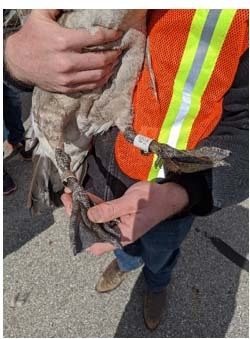
Researchers from the Division of Fish & Wildlife, Ball State University, and Franklin College are using tracking devices to study the behavior of Canada geese in Indiana. If you harvest a goose with one of these devices on its leg, in addition to reporting the metal leg band to the Bird Banding Laboratory, please call 765-285-8842 to report the tracker.
Tracking device locations allows researchers to accurately record the data, helping to sustain future goose hunting opportunities. You will receive an exact replica of the device to keep after the data are downloaded.
|
Chronic wasting disease surveillance
|
Indiana DNR is conducting targeted surveillance for chronic wasting disease (CWD) surveillance in northwest and northeast Indiana during the 2020-21 deer hunting season. Hunters may voluntarily submit samples for testing at select fish & wildlife areas (FWAs) and state fish hatcheries (SFHs) throughout the hunting season. Deer heads can be dropped into designated coolers at select FWAs and SFHs or hunters may make an appointment for their harvested deer to be sampled by a biologist during office hours. The 2020-21 sampling locations and their hours of operation are listed on the website. Indiana DNR biologists will intensively sample hunter-harvested deer at local businesses in the surveillance areas during three weekends: Nov. 7-8, 14-15, and 21-22.
Hunters interested in testing a deer for CWD that was harvested outside the CWD surveillance areas may take their deer to select FWAs and SFHs as well. Alternatively, hunters may independently submit their deer to the Purdue Animal Disease Diagnostic Lab (ADDL) for testing for a fee. Hunters should complete the submission form and follow the shipping instructions on Purdue ADDL’s website.
Hunters who submit a deer for CWD testing will receive a Deer Management Partner magnet and metal tag reminiscent of Indiana’s historical deer harvest confirmation process.
|
 |
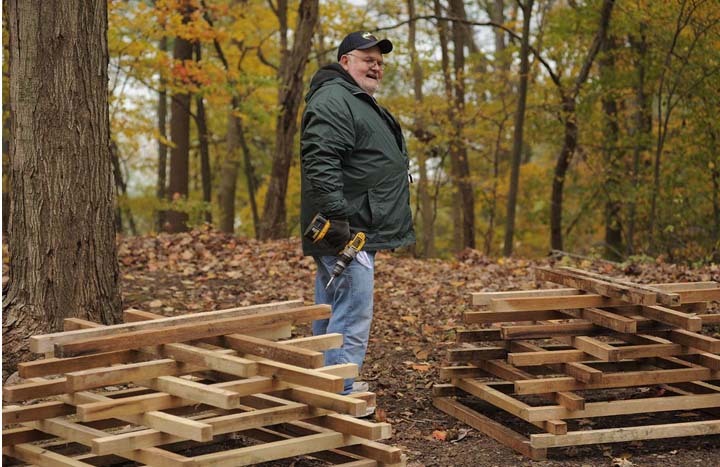 Give back to public lands on Sept. 26
Sept. 26 is National Public Lands Day – the largest, single-day volunteer event for public lands. During the weekend of Sept. 26-27, celebrate National Public Lands Day by choosing your own adventure at your favorite DNR property:
- Give back to an area you love by volunteering – find events near you.
- Get outside and enjoy your favorite recreational activity.
- Can't choose? Do both. Grab a bucket and take on the 5 gallon challenge while you enjoy the recreational pastime of your choosing.
To find a property near you, visit on.IN.gov/recfinder. Indiana State Parks, Indiana State Forests, and State Recreation Areas will be offering free admission for visitors to enjoy the fall season on Sept. 27. Start planning your celebration today.
What’s biting?
|
Fall is a great season to fish – as the water cools, fishing heats up. September and October are two of Indiana’s drier months, which means rivers and streams are running slower and lower than in the spring and summer. This allows increased accessibility and wading opportunity, and the perfect chance to fish for smallmouth bass using hard baits or soft plastics.
In our lakes, crappie are not as deep and suspended as they were in the summer. Cast jigs or use live bait, and focus fishing efforts on areas with sunken logs, standing timber, brush piles, or docks. Fish for striped and hybrid striped bass when surface water temperatures are between 45° and 80° F. During these times, the fish can be found feeding in shallow water where they can be caught by boat or from shore with conventional baitfish-imitating lures. With cooler water temperatures, bluegill and largemouth bass will also move into shallow waters and are easier to catch. Chinook and coho salmon return to streams and spawn from late August to early November. Channel catfish will be stocked in urban locations throughout September.
Enjoy the fall weather and find a good fishing spot near you.
|
 Ruble Lake fishery on track after renovation
|
In October 2019, the Indiana DNR renovated 27-acre Ruble Lake in Vigo County to remove undesirable fish species and improve the health of the fishery. This was a cooperative project with Vigo County Parks and Recreation and the Bass Unlimited Foundation. Aquatic vegetation is returning to the lake and artificial fish habitat structures were placed in the lake by Bass Unlimited while water levels were down. Fisheries biologists conducted a stocking evaluation in July 2020 and found that the fishery is improving steadily.
Bluegill caught during the stocking evaluation ranged in length from 3.7 to 5.5 inches and largemouth bass up to 7.3 inches were collected. These fish are only 1 year old, and growth is 2 to 3 times above average for these species. This is not uncommon for newly stocked lakes. Anglers could see harvestable-size bluegill, redear sunfish, channel catfish, and black crappie as early as next year. Largemouth bass also looked healthy and may reach 14 inches in four years. No common carp or gizzard shad were collected – a sign of a successful renovation.
While the fishery matures, find alternate fishing locations on our Where to Fish Map.
|
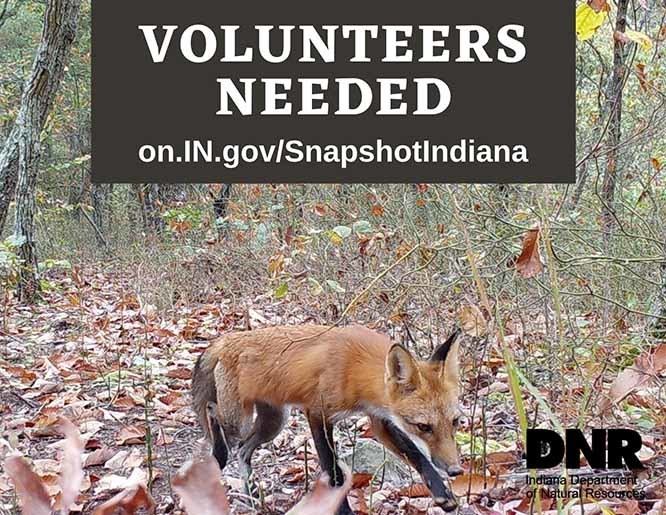 Snapshot Indiana volunteers needed
Indiana DNR is seeking applicants to volunteer for Snapshot Indiana, a volunteer science trail camera project that collects information about Indiana wildlife. Applicants must have access to at least 10 acres of private land and have no bait or feed near where the camera will be set. Selected applicants host a DNR-provided trail camera on their property during October and November and then return the camera to DNR. Camera hosts will receive the best photos from their camera after all photos are processed. Learn more or submit an application at on.IN.gov/SnapshotIndiana.
 Photo courtesy of New York State Department of Environmental Quality
Stop the spread of aquatic invasive species
|
As you prepare your boat and/or other watercraft for the trip home, take a moment to look for aquatic hitchhikers. Zebra mussels, aquatic plants like Eurasian watermilfoil and starry stonewort, and many other invasive species continue to be a threat to Indiana’s waters. We need your help to stop their spread. When you trailer your boat, be sure to inspect and remove any aquatic plants, mud, or zebra mussels that are attached to your watercraft, equipment, or trailer.
The most common locations that plants, mussels, and animals use to hitch a ride are:
- Transom well near the drain plug
- Axle of the trailer
- Lower unit and propeller on the boat motor
- The rollers and bunks that guide the boat onto the trailer
- Anchor and lines
- Bait bucket or live well
To prevent the movement of aquatic invasive species and to protect our waters, remember:
1. Drain water from your equipment, bait bucket, live well and boat before leaving the boat landing
2. Leave drain plugs out while travelling
3. Clean and dry anything that came in contact with water
4. Dispose of unwanted bait in the trash
|
 |
NRC meets Sept. 15
The Natural Resources Commission will meet on Sept. 15 at 10 a.m. ET at the Garrison in Fort Harrison State Park. The agenda will be posted before the meeting.
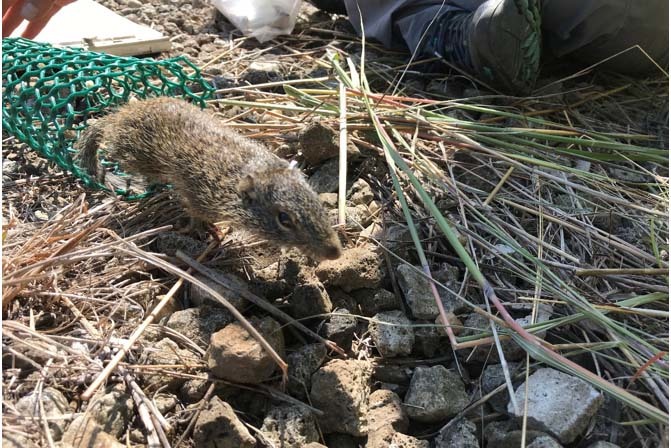 Indiana Nongame Wildlife Fund at Work: Mammals
|
Many of Indiana’s mammals are extremely rare because their natural range barely crosses into the Hoosier State. One of these rare species is the Franklin’s ground squirrel, which only occurs in a few counties in northwestern Indiana. This ground squirrel prefers mixed grasses, tall weeds, and scattered shrubs – habitat commonly found alongside railroad tracks, roads, fences, and sand dunes.
Franklin’s ground squirrels are a hibernating species and are above ground for only a few months each year, providing few opportunities to monitor this state endangered animal. DNR biologists use the summer months to monitor trends in the population, overwintering survival, reproductive success, and more. Although populations of Franklin’s ground squirrels are restricted to habitat along the Lake Michigan shoreline, they appear to be holding steady.
Now more than ever, donations to the Indiana Nongame Wildlife Fund are aiding biologists in conducting surveys for state endangered mammals like the Franklin’s ground squirrel. Donations drive the research, but you can also help by submitting observations of Franklin’s ground squirrels to dfw@dnr.IN.gov. Observations made by volunteer scientists, like you, are greatly needed to expand current knowledge of Franklin’s ground squirrel distribution in northwestern Indiana.
|
 |
Upcoming events
Recent news releases
Reserve a spot for put and take pheasant hunts, Sept. 5
Black bear in Kentucky may cross into Indiana
Changes to fish & wildlife area hunting and trapping draws
DNR, IDEM, and BWQ sampling White River for mainstem project
Partnership with Backcountry Hunters & Anglers pays off
Apply for Indiana Private Lands Access reserved hunts
More

About Fish and Wildlife Management in Indiana
Fish and wildlife management and public access are funded by fishing and hunting license revenue and also through the Wildlife and Sport Fish Restoration Programs administered by the U.S. Fish & Wildlife Service. These programs collect excise taxes on sporting arms and ammunition, archery equipment, fishing equipment, and motor boat fuels. The money is distributed among state fish and wildlife agencies based on land size and the number of licensed anglers and hunters in each state. Find out more information about fish and wildlife management in Indiana at Wildlife.IN.gov.
|